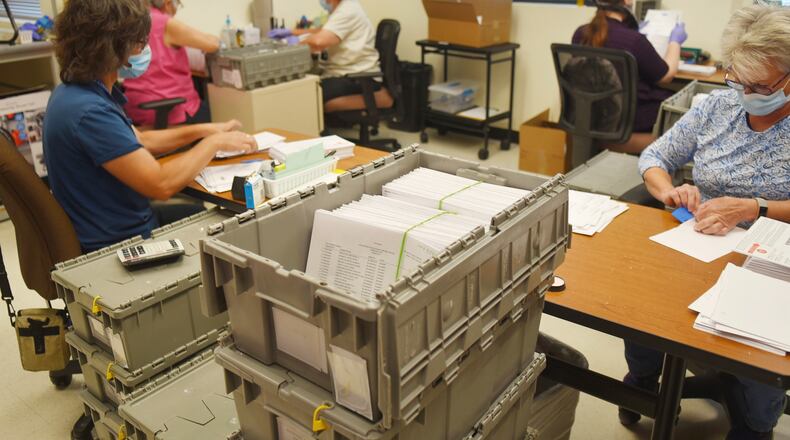“Here are the facts: Ohio smashed voter turnout records in 2020 while providing Ohioans a secure election,” LaRose said in a news release. “Our state is proof positive you don’t have to choose between secure or convenient elections — we have both.”
Very few of those problematic votes were from the Dayton region. In Butler County, one potential case of a non-citizen registering or voting has been referred to Attorney General Dave Yost, while two possible cases of double voting in Ohio were referred to the county prosecutor, according to a spreadsheet from LaRose’s office.
In Clark County, one possible case of someone casting a dead person’s ballot was referred to the county prosecutor.
And in Montgomery County, two possible cases of someone voting for the dead and one case of possible double voting were referred to the county prosecutor.
In all, LaRose referred 62 cases of possible election fraud to Yost or county prosecutors. Thirty-one of those were apparent non-citizens who registered to vote but didn’t cast a ballot. Four were cases of people who may have voted illegally in elections before November 2020.
And in the 2020 general election, 27 votes may have been illegal, according to LaRose’s office.
Former President Donald Trump and many of his supporters have persisted in making unsupported claims of massive voter fraud in the 2020 presidential election. Trump won in Ohio by 475,667 votes, but lost the national popular vote by 7 million and the Electoral College vote by 232 to 306. His campaign and backers filed dozens of lawsuits contesting the results but were unsuccessful due to lack of evidence.
Those claims led to proposals nationwide — including in Ohio — to tighten voting procedures.
The largest group of fraud-related cases in Ohio was of apparent non-citizens who registered to vote but didn’t cast a ballot. They had at least twice identified themselves as non-citizens and were each sent two notices at their registered address asking them to either cancel their voter registration or demonstrate that they had become U.S. citizens, according to LaRose’s office.
Eight non-citizens may have actually cast ballots, LaRose said.
The other potentially illegal votes may have been cast in the name of a dead person, or may be from someone voting twice in Ohio.
In Ohio, ballots are valid if someone votes early or absentee but dies before election day. In “extremely rare” cases, someone may be recorded as having cast a ballot after their reported death; those cases are referred to local prosecutors for further investigation, the news release said.
It’s possible for someone to be briefly registered to vote in two counties at once, and nine people may have cast ballots in two counties in the 2020 general election, LaRose said.
There are also ongoing investigations of people who may have voted in Ohio and in one other state.
“Those referrals will be forthcoming,” the news release said.
About the Author

